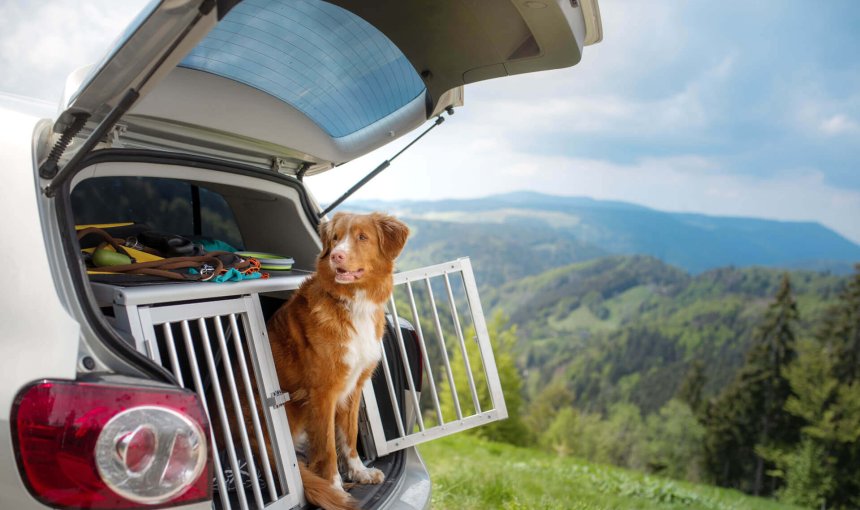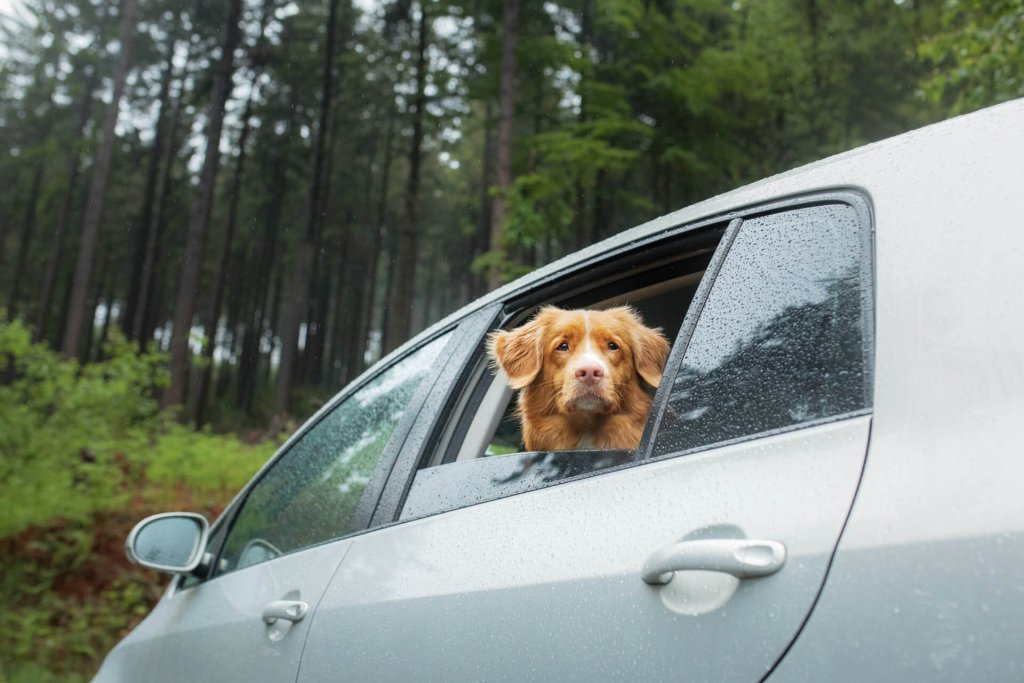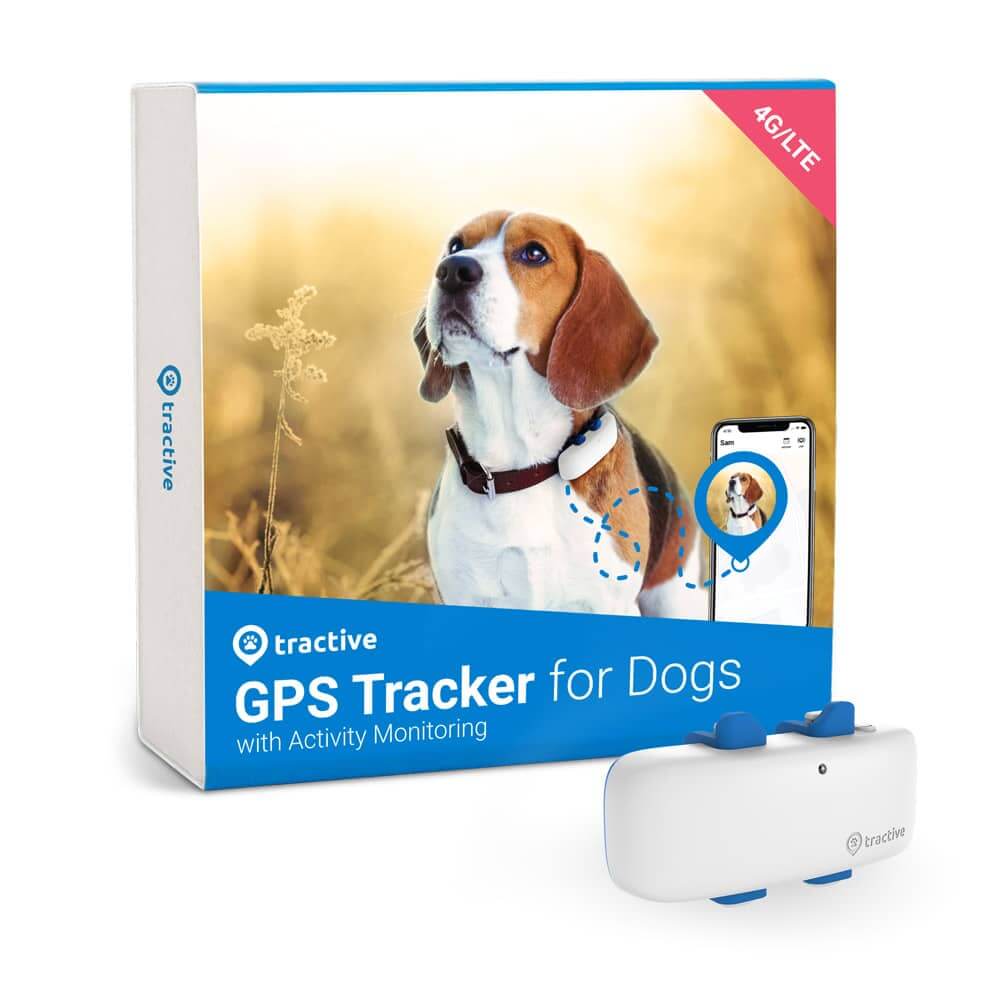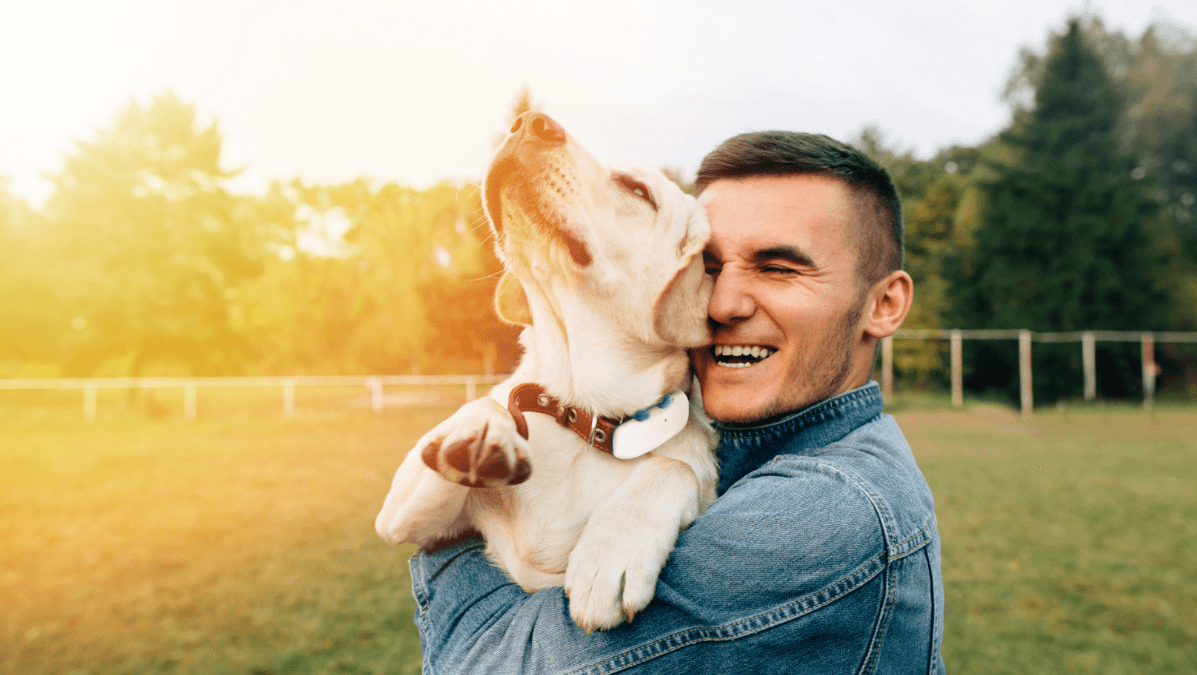Driving With A Dog: How To Make Car Trips Safe And Enjoyable
Ready to hit the road with your dog? Not so fast. When driving with a dog it's important to restrain your furry buddy and follow these safety tips for the best possible outcome on your road trip together.

As dog lovers, we want our canine friends as close as possible at all times, even when traveling. But safety always comes first when driving with a dog, with comfort and fun a close second. Follow our dog car travel safety tips to keep your pooch protected as you cruise down the highway together. And don’t forget: you can keep an eye on your dog at all times with the Tractive GPS & Activity Tracker for dogs.
Learn more about GPS trackers for dogs
- Prepare your dog for longer drives: Take short test drives
- Should I restrain my dog in the car?
- What’s a suitable restraint for dogs in cars?
- Driving with a dog: Unsafe car seats for dogs
- Safe car seats for dogs
- Always know where your dog is
- Dog car travel problems and how to solve them
- Plan ahead for a safe and comfortable car trip
- Remember, keeping your dog restrained in the car keeps you both safe
Prepare your dog for longer drives: Take short test drives
Begin safe car rides with your dog when they are just a puppy, so they learn that car travel can be fun and rewarding.
Before you embark on a long road trip, familiarize your dog with safe car travel. Take short trips around town to fun destinations, such as a park, hiking trail, or to visit a friend (dog or human). Offer treats and lots of verbal praise. If the veterinarian’s office is the only place your dog ever goes in the car, they will associate car travel with an unpleasant experience, and could refuse to get in your vehicle in the future.
Should I restrain my dog in the car?
Yes, your dog should always be restrained while in a moving car. It’s the safest option for your pup, for you, and for all the other drivers on the road.
You are a safe driver, but you can never predict what other drivers are going to do. You may need to slam on the brakes or swerve quickly to avoid an accident.
Unrestrained dogs can become projectiles during these situations, posing a threat to human passengers as well as to the dog itself. When you slam on the brakes, your unrestrained dog will be hurled forward and could be seriously hurt.
Your dog can end up injured or traumatized by an incident like this, jeopardizing all your future road trips. Choose car safety over convenience every time, and you and your pup can enjoy years of pet travel adventures together.
Some states in the U.S., all of the United Kingdom, and most of Australia require by law that dogs must be restrained while in a car. Other localities can penalize drivers if a dog is unrestrained in a vehicle because this is considered a distraction. Your veterinarian or local animal shelter can help you navigate local laws and ordinances related to dog restraints.
You would never travel with your children roaming around the car while you drive. Why would you permit this with your dog? After all, your dog is part of the family!
What’s a suitable restraint for dogs in cars?
The type of restraint you choose should match the size and demeanor of your pup. Many options are available for small, medium, and large dogs.
Driving with a dog: Unsafe car seats for dogs
Dogs should not sit in your lap while you drive
The worst place for a dog to sit in a car is on your lap. While you may relish the adorableness of your pup with their paws perched on the steering wheel, this is a big no-no. Your dog is a huge distraction for you and other drivers. Distraction leads to accidents, plain and simple. If you should suddenly hit the brakes or be rear-ended, imagine what will happen to the beloved pup on your lap as you lurch forward and the airbag goes off.
Never drive with your dog sitting on your lap.
Front passenger seat is not safe for dogs
Airbags are a danger to any size dog riding in the front passenger seat. Keep in mind, airbags are meant to protect adult humans, not dogs (or children under age 13). Car airbags deploy with force that can cause injuries or even death to a dog or child. Only let your dog ride in the front passenger seat if your car does not have airbags, and always use some type of restraint.

Don’t let your dog travel in the car with their head out the window
We admit that dogs seem to enjoy riding in a car with their head out the window, but it’s not a great idea. You wouldn’t let your children stick their heads out the window while you drive, so why allow your dog to do it?
Accidents happen, and there are many cautionary tales about dogs’ heads striking mailboxes, sign posts, or being hit by flying debris. Even worse, your dog could leap out of the open window and onto the highway. We know your dog is smart, but they are not smart enough to anticipate potential dangers while in the car.
The better option is to roll the window down a crack to allow fresh air to enter. Or install a window guard that lets you open the window while blocking your dog from sticking their head out.
Also, when driving with a dog, do not allow your pup to ride untethered in the open bed of a pickup truck. Your dog could be tossed out of the truck bed during a sharp turn or leap out of the truck onto the road. If you must keep your dog in the truck bed, double-tether them so they remain in the center and cannot move across the truck bed.
As for convertibles, use common sense and crate or securely tether your dog to avoid dangerous accidents.
Follow your pet’s every step with real-time GPS tracking from Tractive
Safe car seats for dogs
Try a dog car harness or tether
Medium to large dogs should wear a harness that can be buckled into the car’s seat belts. A car harness for dogs typically has loops for seat belts to run through. Choose a harness with thick, padded straps for comfort. Tethers should be short and attach at the dog’s back, not the neck. Your dog should be able to sit or lie down comfortably while harnessed or tethered. If your car has front passenger airbags, keep your pooch in the back seat.
Use a crate or a car dog barrier
A dog crate is another good option for keeping your pup secured while driving with a dog. Here are some important points to keep in mind:
- A crate needs to be big enough for your dog to stand, sit, turn around, and lie down in.
- Make sure the crate can sit flat in your vehicle. If you place the crate in the back seat, tuck a rolled-up towel under the crate to level it.
- Run the seat belt through the crate handle or tie it down to keep it from sliding around.
- In a minivan or SUV, place the crate in the far back of the vehicle.
- Do not put a crate in the trunk of a sedan-style car.
- Place a favorite towel or blanket in the crate to make it feel like home.
Car dog barriers are made of fence-like metal bars, sit behind the front or rear seats of your car, and reach to the ceiling. These are best for containing large dogs, who can better stabilize themselves during turns and quick stops.
Try a booster seat or dog car seat
A booster seat or dog car seat is a great option for small dogs and puppies. The seat is an open-topped box that is secured to the vehicle’s seat by straps. Choose a soft-sided canvas seat or a deluxe upholstered model. You can adjust the height of some seats to allow your dog to see out the window while sitting upright. When your pup is tired, they can curl up in the seat for a doggie nap.

Always know where your dog is
Follow every step in real-time with unlimited range. Get alerts if they wander too far. Keep them happy & healthy with Wellness Monitoring. And let others – like walkers or sitters – keep an eye on your dog too.
Dog car travel problems and how to solve them
Why does my dog bark in the car?
A barking dog can be a headache-inducing distraction during your road trip. It helps to understand that dogs bark in the car because they are anxious, excited, or dislike the restraint that is keeping them away from you.
Anxious dogs need to be reassured that the car trip is going to result in something pleasant, not a scary experience like the vet’s office. Get your dog acclimated to safe car travel by starting with short drives around the neighborhood and offering plenty of treats and positive verbal praise. Gradually lengthen the trips until the barking stops. This may take a few weeks of consistent practice.
If your dog is soooo excited to be in the car, keep them restrained with a dog car seat or tether so they won’t wander around in the car. Work on basic commands like “stay” or “wait” so your dog will learn to be still.
Frustrated dogs who dislike their restraint need to develop a positive relationship with the restraint and behave appropriately when the restraint is present. You can gradually introduce your pup to a crate, car seat, harness, or tether in the comfort of your home. Offer an especially yummy treat whenever this restraint is present or when your dog tolerates it. Over time, your dog will associate the restraint with something positive.
Train your dog: The Importance of Consistency in Dog Training
Car sickness in puppies
Car sickness can be an issue for some dogs, especially puppies. If your puppy gets nauseous during car rides, put plastic sheeting on the car seat and bring old towels for clean ups. Start with short car trips and work up to longer excursions. Many puppies outgrow their car sickness, but you may need to be patient as they get acclimated to being in a moving vehicle.
On an extended road trip, minimize car sickness in your dog by feeding them a few hours before departure. Take your pup for a pre-travel walk to reduce anxiety. Offer a few kibbles (not a full meal) during each rest stop.
Keep the window open a few inches to allow fresh air to enter, which can help alleviate car sickness. Don’t open the window far enough to allow your pup to stick their head out the window.
Dangers to dogs in parked cars
The hazards of leaving your dog in a parked car are well known, but people still do it. Maybe you are in a hurry, or think that your pup will be just fine if you park under a tree. But a dog locked in a closed car, even with the windows partially open, is in grave danger of overheating. Remember, heat stroke in dogs can be fatal.

Plan ahead for a safe and comfortable car trip
Bring your own water
Keep your pup fed and hydrated on your trip. Bring a collapsible water bowl and fill it with fresh water when you stop.
Include frequent stops for long car journeys
Everyone enjoys a break after a few hours in the car, including your pooch. A rest stop allows your dog to stretch their legs and relieve themselves.
At each stop, give your dog fresh water and a light snack.
Dog Park Etiquette: How to follow dog park rules and make your visit enjoyable
Some rest areas include pet travel exercise areas or small fenced dog parks. Be sure to leash your dog before exiting the vehicle to avoid escapes, and make sure your pup is wearing a collar or harness with ID tags. Consider using a GPS dog tracker to provide peace of mind so you can always know your pup’s exact location.
Avoid Distractions
It’s hard to resist gazing at your adorable pup as they snooze in their car seat, but it’s essential to keep your eyes on the road. After all, you are carrying precious cargo!
It is well-documented that distractions – such as texting, eating, adjusting the radio, or interacting with your puppy – contribute to thousands of vehicle accidents every year, including some deaths. Don’t risk it. Safety always comes first.
Plan your route
If you are headed out of town, plan ahead so you won’t encounter surprises. Find rest areas at two-hour intervals along your route. If you will stay overnight, look for pet-friendly hotels or campsites.
Bring food, water, and your dog’s favorite toys. If your pup is on medication, bring extra in case your return is delayed. Load a dog-friendly playlist onto your device as a finishing touch!
If you travel long distance or across the border, bring along your pet’s vaccination record, medication and a pet first-aid kit, collar ID tag, Tractive GPS Tracker and a list of lodging, pet stores, emergency services, and pet friendly parks along the way.
Remember, keeping your dog restrained in the car keeps you both safe
In case you only take one thing away from this guide on driving with a dog, let it be to keep your dog restrained when traveling by car together. Some dog parents think it’s unfair to restrain a dog while in the car, but the exact opposite is true. Allowing your dog to roam freely in the car puts your pup, your human passengers, and you at risk. Safety is more important than cuteness or fun. Always protect your sweet pup as best you can. Your pet depends on you to keep them safe!




